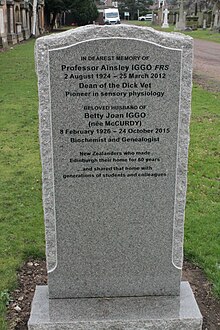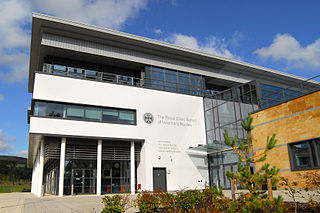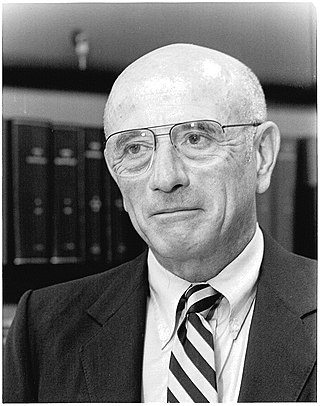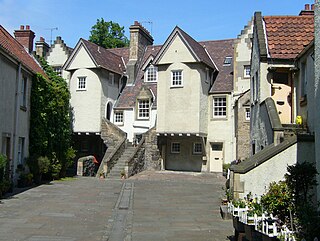Ainsley Iggo | |
|---|---|
 Ainsley Iggo in 1990 | |
| Alma mater | |
| Scientific career | |
| Fields | neurophysiology |
Ainsley Iggo FRS (2 August 1924 – 25 March 2012) was a New Zealand born neurophysiologist.
Ainsley Iggo | |
|---|---|
 Ainsley Iggo in 1990 | |
| Alma mater | |
| Scientific career | |
| Fields | neurophysiology |
Ainsley Iggo FRS (2 August 1924 – 25 March 2012) was a New Zealand born neurophysiologist.
He was born in Napier, New Zealand and studied at a farming college in Invercargill, where he won a bursary to study Agricultural Sciences at the University of New Zealand. [1] There he was awarded a research scholarship to continue his studies in Britain. After gaining a BSc and an MSc in electrophysiology and neuroscience at the University of Otago in Dunedin, with a thesis on rumen digestion in sheep, [2] he moved to Aberdeen to join the Rowett Research Institute, an agricultural research facility of the University of Aberdeen. There he was awarded a PhD for his studies on the vagus nerve of sheep. [3]

He moved to Edinburgh in 1954, where he began as a lecturer in physiology at the Medical School of the University of Edinburgh before accepting the Chair of Veterinary Physiology at the Royal (Dick) School of Veterinary Studies of the University of Edinburgh in 1962. He played the major role in establishing the school, commonly known as the Dick Vet, into an internationally recognised centre of excellence, before becoming dean of the School. He remained as professor emeritus of veterinary physiology until his death. [3]
In 1958 he became the first scientist to demonstrate electrical recordings from individual C fibres, the thinnest of the body's nerves and also defined the function of the various sensory receptors in the skin which detect touch, tickle, heat and pain. One of the receptors is now named after him. [3] Iggo received a DSc from the University of Edinburgh in 1963 for his thesis, “Mammalian afferent nerve fibres". [4]
In 1973 he was a founder member and later president (1981–84) of the International Association for the Study of Pain (IASP). He was elected a Fellow of the Royal Society in 1978 [5] and a Fellow of the Royal Society of Edinburgh. [3]
In 1974 he succeeded Prof Frank Alexander as Dean of the Dick Vet. He was succeeded in turn in 1977 by Prof Ian Beattie. He was brought back for a second term as Dean from 1985 to 1990. [6]
He died in Edinburgh on 25 March 2012. He is buried in Grange Cemetery in south Edinburgh. The grave lies midway along the north path on its north side.
In 1952 he married New Zealand biochemist Betty Joan McCurdy (1926–2015), and together they had 3 sons. [3]
Autar Singh Paintal was a medical scientist who made pioneering discoveries in the area of neurosciences and respiratory sciences. He is the first Indian Physiologist to become the Fellow of the Royal Society, London.
Merkel nerve endings are mechanoreceptors, a type of sensory receptor, that are found in the basal epidermis and hair follicles. They are nerve endings and provide information on mechanical pressure, position, and deep static touch features, such as shapes and edges.
Francis Hugh Adam Marshall CBE FRS FRSE LLD was a British physiologist who did pioneering early research into the physiology and endocrinology of biological reproduction.

The Royal (Dick) School of Veterinary Studies, commonly referred to as the Dick Vet, is the veterinary school of the University of Edinburgh in Scotland and part of the College of Medicine and Veterinary Medicine the head of which is Moira Whyte. David Argyle has been Dean and Head of School since 1 November 2011.
William Alexander Bain FRSE DSc was a Scottish pharmacologist, best known for his early work with antihistamine drugs.

A cannulated cow or fistulated cow refers to a cow that has been surgically fitted with a cannula. A cannula acts as a porthole-like device that allows access to the rumen of a cow, to perform research and analysis of the digestive system and to allow veterinarians to transplant rumen contents from one cow to another.

Peter John Snow, Dr. is an Australian neuroscientist and author.

Edward Roy Perl was an American neuroscientist whose research focused on neural mechanisms of and circuitry involved in somatic sensation, principally nociception. Work in his laboratory in the late 1960s established the existence of unique nociceptors. Perl was one of the founding members of the Society for Neuroscience and served as its first president. He was a Sarah Graham Kenan Professor of Cell Biology & Physiology and a member of the UNC Neuroscience Center at the University of North Carolina School of Medicine.

James Hartley Ashworth FRS FRSE DSc SZS was a British marine zoologist.

William Dick was a Scottish veterinarian and founder of the Dick Vet School in Edinburgh, the first veterinary college in Scotland. He is responsible for major advances in the field of veterinary science and the profession as a whole.
Orlando Charnock Bradley FRSE was a British veterinarian and first President of the National Veterinary Medical Association. He is described as one of the foremost veterinarians of the 20th century.

Sir Thomas Dalling was a Scottish veterinarian and lifelong champion of veterinary research and education.

John McDougal Russell Greig CBE FRSE MRCVS was a Scottish veterinarian who was Director of the Moredun Research Institute from 1930 to 1954. He is noted for the development of several important animal vaccines: Enzootic abortion in ewes; Braxy and Louping ill. His work on milk effectively created "clean milk" for the first time in Britain.
Dr Thomas Goodall Nasmyth FRSE DL JP DPH was a Scottish physician, medical author and historian. He served as Medical Officer of Health for Fife, Kinross and Clackmannanshire. He was one of the first (1899) to link Bovine Tuberculosis to the human form, later leading to the widespread use of pasteurisation of milk. He was influential in the decision to bond whisky for 3 years
Eleanor Riley was Director of the Roslin Institute, Dean of Research at the Royal (Dick) School of Veterinary Studies, and professor of Immunology at the University of Edinburgh. Her research focusses on understanding the immune response of the host to malaria and other diseases using human data and mouse models.
Frank Alexander FRSE MRCVS was an English veterinarian who served as Dean of the Dick Vet School from 1970 to 1974.
Keith Macfarlane Dyce, DVM&S, BSc, MRCVS (1926–2014) was a 20th-century British veterinarian who served as Dean of the Dick Vet School from 1980 to 1984. He was an expert on dog anatomy.
Prof (Major) Morley Hodkin Sewell MRCVS was a British veterinarian who served as Dean of the Dick Vet School in Edinburgh from 1994 to 1997. He was an expert on tropical diseases of animals.

Melva Noeline Philipson was a New Zealand botanist.
Janet Scott Salmon Blyth was a Scottish geneticist who specialised in poultry genetics and husbandry in the interwar and post-war decades and played a prominent role in establishing the Poultry Research Centre, one of several institutions that would eventually be amalgamated to form the Roslin Institute.